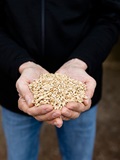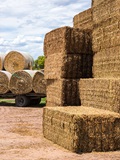Darling Downs
20 May 2020
| Date | DD 23 | DD 22 | DD 5YA |
|---|---|---|---|
| 06-Jan-23 | 351 | 260 | 370 |
| 13-Jan-23 | 365 | 260 | 370 |
| 20-Jan-23 | 365 | 260 | 374 |
| 27-Jan-23 | 365 | 260 | 377 |
| 03-Feb-23 | 370 | 260 | 379 |
| 10-Feb-23 | 370 | 260 | 379 |
| 17-Feb-23 | 370 | 260 | 372 |
| 24-Feb-23 | 370 | 260 | 365 |
| 03-Mar-23 | 375 | 260 | 365 |
| 10-Mar-23 | 375 | 260 | 373 |
| 17-Mar-23 | 373 | 265 | 377 |
| 24-Mar-23 | 370 | 265 | 377 |
| 31-Mar-23 | 370 | 265 | 377 |
| 07-Apr-23 | 370 | 265 | 377 |
| 14-Apr-23 | 370 | 265 | 373 |
| 21-Apr-23 | 370 | 265 | 374 |
| 28-Apr-23 | 370 | 265 | 370 |
| 05-May-23 | 370 | 265 | 370 |
| 12-May-23 | 370 | 265 | 370 |
| 19-May-23 | 370 | 265 | 379 |
| 26-May-23 | 370 | 265 | 383 |
| 02-Jun-23 | 370 | 265 | 385 |
| 09-Jun-23 | 365 | 265 | 383 |
| 16-Jun-23 | 363 | 265 | 377 |
| 23-Jun-23 | 360 | 265 | 373 |
| 30-Jun-23 | 355 | 265 | 377 |
| 07-Jul-23 | 345 | 268 | 383 |
| 14-Jul-23 | 333 | 268 | 383 |
| 21-Jul-23 | 320 | 268 | 394 |
| 28-Jul-23 | 310 | 268 | 386 |
| 04-Aug-23 | 310 | 268 | 386 |
| 11-Aug-23 | 310 | 268 | 384 |
| 18-Aug-23 | 308 | 268 | 407 |
| 25-Aug-23 | 305 | 268 | 396 |
| 01-Sep-23 | 305 | 268 | 385 |
| 08-Sep-23 | 268 | 385 | |
| 15-Sep-23 | 255 | 367 | |
| 22-Sep-23 | 255 | 367 | |
| 29-Sep-23 | 255 | 365 | |
| 06-Oct-23 | 253 | 362 | |
| 13-Oct-23 | 253 | 362 | |
| 20-Oct-23 | 255 | 362 | |
| 27-Oct-23 | 258 | 363 | |
| 03-Nov-23 | 261 | 358 | |
| 10-Nov-23 | 263 | 359 | |
| 17-Nov-23 | 273 | 356 | |
| 24-Nov-23 | 275 | 356 | |
| 01-Dec-23 | 279 | 359 | |
| 08-Dec-23 | 283 | 362 | |
| 15-Dec-23 | 290 | 363 | |
| 22-Dec-23 | 310 | 357 | |
| 29-Dec-23 | 338 | 370 |
Notes:
Change in price is the change since the last report. Hay quoted is sourced and delivered locally, GST exclusive unless stated otherwise. It should be noted that local prices quoted may not be the cheapest available, sourcing it from another region may be more affordable, and buyers are encouraged to evaluate all options. Prices are indicative to a mid-range shedded product, and based on the best indication of market value at the time of reporting. It should be noted there is a wide variation in quality of hay, prices for a mid-range product will not reflect the weighted average of trade. Prices will naturally vary based on the product quantity and quality, buyer/seller relationship and the size of the trade.The hay report has been commissioned by Dairy Australia to provide an independent and timely assessment of hay markets in each dairy region. This report is created using data provided by the Australian Fodder Industry Association (AFIA). It should be remembered that actual prices may vary for quality or other reasons. Whilst all reasonable steps have been taken to ensure the accuracy of the information contained in this report, Dairy Australia disclaims all liability to the fullest extent permitted by Australian law for any inadvertent errors and for any losses or damages stemming from reliance upon its content. Dairy Australia recommends all persons seek independent advice and, where appropriate, advice from a qualified advisor before making any decisions about changes to business strategy.
Commentary
- Another dry week in the region, with little to no rainfall being recorded across most areas. Light falls of between 1mm and 5mm of rain were recorded in the eastern part of the region. Mostly warm sunny days.
- Dry conditions continue, and crops are showing it in the region, with patchy growth of some later sown crops but average growth for anything sown early enough to reach the subsoil moisture.
- Herds continue to be fed out fodder to supplement dry pasture feed options.
- Oat crops are continuing to be cut for hay, as well as some other cereal crops, as producers seek to mitigate risk against the possibility of a reduced grain prices at harvest, while hay prices are high.
- There are reports that recently baled lucerne hay in the west of the region was sold direct from the paddock within a day of being made. While this is good for the growers, it does indicate some concerns for hay availability on the Darling Downs this summer.
- Transport costs continue to be a major factor in the movement of hay and the trade-off between quality and price for some livestock producers looking to supplementarily feed their herds.
- Enquiries remain strong, with the ongoing dry conditions and the current herd sizes requiring additional fodder supplies. Some hay is being sold straight from the paddock. Quite a bit of the fodder moving into the region is from the southern states and the Riverina, though there are also trucks coming in from northern Queensland.
- No change to pricing this week.
- Cereal hay: +/-0 ($270 to $340/t). Prices remain steady this week.
- Lucerne hay: +/-0 ($410 to $460/t). Prices remain steady this week.
- Straw: +/-0 ($100 to $130/t). Prices remain steady this week.
- Pasture hay: +/-0 ($300 to $345/t) Prices remain steady this week.
- Please note: Unless stated otherwise, prices are per tonne, sourced and delivered locally. The price range indicated is for feeds of varying quality with the price range generally indicative of quality of feed. We recommend feed testing and viewing of fodder before purchase to be sure of the quality of feed.

